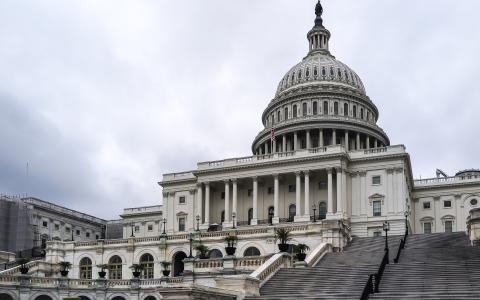
(Yahoo! Finance) - Donald Trump hoped to avoid a debt ceiling fight in 2025, but it was not to be.
Last month, Democrats and about three dozen of the most conservative Republicans made common cause to reject a plan that included a debt ceiling extension, pushing off the issue until 2027 or 2029 (or even forever).
Now, with default still on the table for 2025, the next step in that process starts on Jan. 1 when — as per a 2023 agreement between President Joe Biden and then-House Speaker Kevin McCarthy — a temporary suspension of the debt limit ends and a cap on the US government borrowing authority will be back in place.
On Dec. 27, Treasury Secretary Janet Yellen wrote a letter to congressional leaders explaining that the federal government will hit its debt limit as early as Jan. 14 unless Congress or Treasury takes action.
When the debt limit is reached, the Treasury Department has the means to delay a default for a few months using a process called "extraordinary measures." Basically, they can move money around various government accounts to delay an actual default on US obligations.
“Treasury currently expects to reach the new limit between Jan. 14 and Jan. 23, at which time it will be necessary for Treasury to start taking extraordinary measures,” Yellen stated.
All things considered, questions about government default could again weigh on the economy in the early months of 2025. Here's some of the early thinking about how the next round could play out.
An unpredictable path for borrowing authority
What happens after Jan. 1 will be essentially an educated guessing game about when the moment comes that these extraordinary measures run out and an actual default could be in the offing.
The Treasury Department has traditionally offered very limited estimates of that possible "X-date" leaving others to weigh in.
One recent analysis from the Economic Policy Innovation Center authored by two former Republican Capitol Hill staffers offered mid-June as the time to watch.
But the paper was quick to add that "it is entirely possible that the debt ceiling will be reached prior to June 16, and the Congress will need to act earlier than many are expecting."
The Bipartisan Policy Center (BPC) has also done extensive work to project possible X-date ranges. And while BPC hasn't yet released a formal analysis for 2025, the group's managing director of Economic Policy, Rachel Snyderman, reminded us in an episode of Yahoo Finance's Capitol Gains podcast that workarounds only delay default for an unknown amount of time.
Extraordinary measures "could potentially carry them further into 2025 [but] that length of time, however, is not yet known for several reasons," Snyderman explained, citing next year's tax season and the unpredictability of government spending.
In any case, House Speaker Mike Johnson may have made next year's standoff even more politically complex when he said that next year's deal would include a debt limit raise of $1.5 trillion through the reconciliation process only if it's paired with $2.5 trillion in cuts to "net mandatory spending."
Capitol Hill's plan of action
With this fiscal guessing game underway — and X-date projections likely to be flying around and making traders nervous — Republican lawmakers and the new Trump administration will be looking for a solution.
To be clear, this is not a situation Trump wanted. Last week he called the debt ceiling "a nasty TRAP set in place by the Radical Left Democrats," adding that "they are looking to embarrass us" when it comes up for a vote.
In 2025, the debt ceiling's fate is almost entirely in the hands of Republicans who will control the White House, Senate, and House of Representatives.
That's especially true because Speaker Johnson is now promising to pass an increase using the reconciliation process, which has become hyperpartisan in recent years as it allows the Senate to pass bills with 51 votes and exclude the minority party altogether.
The issue for Trump in the House is that a significant group of hard-line Republicans have never voted for any sort of debt limit increase and aren't showing any willingness to do so.
As Rep. Eric Burlison, a self-described fiscal conservative from Missouri, put it in a recent video: "Until this town gets serious about cutting spending, I'm not going to participate in the shell game of continuing to raise the debt limit."
At least two dozen House Republicans take the same approach. That's more than enough to tank a reconciliation deal, given the GOP's slim margins.
Johnson’s plan to pair a debt limit with cuts to so-called mandatory spending could present yet another political landmine if an already controversial debt ceiling increase is paired with changes to programs like Medicaid, Medicare, or Social Security.
By Ben Werschkul - Washington Correspondent



